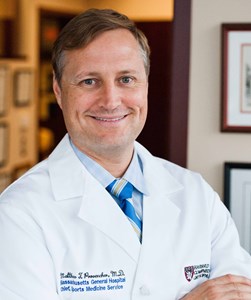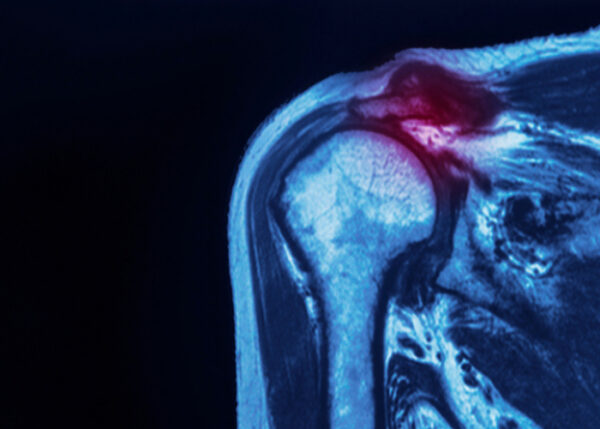Shoulder Labral Tear Specialist

Are you an athlete who participates in sports that involve throwing overhead? If so, you may be at risk of developing a shoulder labral tear or a SLAP tear. Labral tears and SLAP tears are common injuries sustained after a fall on an outstretched hand, from a sports injury or from natural degeneration of the labrum. Shoulder labral tear specialist, Dr. Matthew Provencher provides diagnosis and both surgical and nonsurgical treatment options for patients in Vail who have labral or SLAP tears in the shoulder. Contact Dr. Provencher’s team today!
What is a Labral Tear, SLAP Tear and Bankart Tear?
The labrum is a c-shaped rim of cartilage found in the shoulder joint surrounding the glenoid (socket). The labrum serves two important functions – an attachment site for the biceps tendon and the glenohumeral ligaments, as well as to deepen the socket so the shoulder remains in place during movement. The labrum may become peeled off the rim of the socket during a shoulder injury, such as a dislocation. When this occurs, the shoulder may experience instability and lead to a partial or complete dislocated shoulder. A labral tear, otherwise known as a torn labrum, is a common injury and is typically caused by a fall on an outstretched arm or repetitive overhead motion. The two most common types of labral injuries seen by Dr. Matthew Provencher, orthopedic shoulder specialist serving the Vail, Aspen, Colorado Springs and Denver, Colorado area, are SLAP and Bankart tears.
What is a SLAP Tear?
A SLAP (Superior Labrum Anterior to Posterior) tear is a specific type of labral tear to the superior (uppermost) area of the labrum that can involve the attachment site of the biceps tendon (long head), typically located at the top of the shoulder joint. A Bankart tear describes a labrum tear that forms a pocket toward the back or front of the socket where the humeral (upper arm bone) head can dislocate into. .
SLAP and Bankart tears are generally caused by a traumatic event, such as a fall or collision, or from overuse. SLAP tears are quite common in the overhead athletic population, such as volleyball, baseball and tennis players.
What are the Symptoms of a Torn Labrum?
A labral tear causes a number of symptoms, including:
- Deep shoulder pain
- Shoulder instability
- Decreased range of motion
- Shoulder stiffness
- A popping sensation
- A clicking sensation
SLAP and Bankart tears usually make it difficult for a patient to perform normal, everyday shoulder movements. Patients who have sustained a Bankart tear may also feel a sensation that the shoulder may dislocate or “slip” out of place.
How to Know If You Have a Torn Labrum:
Dr. Provencher will perform a physical examination to diagnose a labral tear. If a SLAP tear is present, it is important he determines if the torn labrum is connected to pre-existing shoulder instability or if the tear occurred from trauma to the joint. Dr. Provencher may also perform a series of x-rays and an MRI scan to rule out other potential shoulder injuries. A dye is often injected into the injured joint before the MRI scan to help Dr. Provencher identify the exact location of the labral tear.

What are the Treatment Options for a Torn Labrum?
Treatment of a labral tear, such as SLAP and Bankart tears, takes several factors into consideration. Dr. Provencher will factor patient age, patient activity level, severity of tear, type of tear, and previous shoulder instability into his treatment recommendation.
Do I Need Surgery for a Torn Labrum?
If the torn labrum is mild, Dr. Provencher will usually recommend non-surgical treatment. Non-surgical measures include rest, ice, medication and a physical therapy program designed to strengthen and stretch the injured shoulder. It is strongly suggested that patients work with the in-house physical therapists at Howard Head Sports Medicine to optimize their rehabilitation.
What are the Surgical Treatment Options for a Labral Tear?
Shoulder surgery may be necessary if non-surgical measures are unsuccessful or if the labral tear is too severe. Dr. Provencher will determine the type of torn labrum surgery based on type of tear, severity of tear, condition of the biceps tendon and any other shoulder injuries present at the time of surgery.
Common surgical options include:
- Debridement- During debridement, Dr. Provencher smooths out the torn labrum. This procedure is typically recommended for SLAP tears that do not involve the biceps tendon.
- Labrum repair- Most commonly found in cases associated with chronic shoulder instability, the labrum may be torn in the lower half of the socket. A repair of the labrum is performed by Dr. Provencher to restore stability to the joint.
- Biceps tenodesis- Biceps tenodesis involves Dr. Provencher removing the injured biceps tendon from the torn labrum and reinserting it into a different lower area of the shoulder on the humerus (upper arm bone). By decreasing the SLAP region’s pulling forces, the painful and troublesome symptoms will be alleviated.
- SLAP repair- A SLAP repair is usually reserved for young, overhead athletes who want to remain active in sports. A SLAP repair is the most common procedure for symptomatic SLAP lesions and involves the labrum being reattached to the socket using strong sutures.
- Bankart repair- A Bankart repair is the most common shoulder surgery performed on patients with chronic instability. Performed by Dr. Provencher in an arthroscopic procedure, the labral tear is repaired and the stretched anterior shoulder capsule is made to lie on top to make it smaller.
For more resources on a labral tear, such as SLAP and Bankart tears, or to learn more about torn labrum treatment, please contact Dr. Matthew Provencher, orthopedic shoulder specialist serving the Vail, Aspen, Colorado Springs and Denver, Colorado communities.